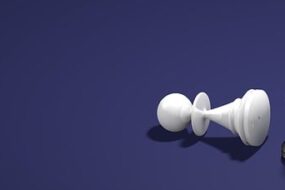Overview of Urinary Retention
Urinary retention entails a condition where a patient is incapable of completely emptying urine from their bladder. It is also referred to as ischuria.
NANDA urinary retention definition is:
“Incomplete emptying of the patient’s bladder”.
In most common cases, the patient will feel like there is still urine in their bladder after emptying it. Urinary retention makes the patient uncomfortable. Note that it could occur on its own or coupled with urinary incontinence.
Just like in the case of nursing care for bleeding risk or nursing care for pneumonia, a practicing nurse or nurse student should be able to effectively diagnose and develop a nursing care plan for urinary retention.
This requires good skills on how to write a nursing care plan.
Defining Characteristics
There are various signs and symptoms that are usually associated with urinary retention. Some of these signs and symptoms include:
1. Bladder distention,
2. Incontinence,
3. Abdominal discomfort,
4. Hesitancy,
5. Decrease or urinary output absence for 2 successive hours,
6. Residual urine,
7. Urgency, and
8. Bladder fullness sensation.
Related Factors
Note that there are numerous factors that are associated with urinary retention. The nurse is required to analyze these factors to come up with a diagnosis that is effective for clinical use.
Accordingly, there could be cases of urinary retention related to;
1. Prostate enlargement,
2. Infection,
3. Bladder’s inability to adequately contract,
4. Detrusor musculature decompensation,
5. Inadequate intake,
6. General anesthesia as well as regional anesthesia,
7. Mechanical obstruction,
8. High urethral pressures resulting from injury, disease, hematoma, and edema,
9. Pain or fear of pain,
10. Surgical manipulation,
11. Nerve paralysis, or motor or sensory impairment, and
12. Urethral blockage.
Care Plan Goals and Objectives
The development of a nursing care plan for urinary retention just like the nursing care plan for urinary incontinence or nursing care plan for UTI, should be guided by specific goals.
Per se, some of the key goals and objectives for a nursing care plan for urinary retention include:
1. Patient is able to completely empty the bladder,
2. Patient manages to have volumes of 300 ml of urine or above in each voiding, with a residual volume that is below 100 ml, and
3. Patient is able to void in sufficient quantity without experiencing palpable bladder distension.
Nursing Assessment
A nursing assessment is critical in the development of a nursing care plan for urinary retention. The assessment is meant to identify potential problems causing the condition.
It seeks to determine whether it is a urinary retention related to infection, urethral blockage, prostate enlargement, etc.
For nursing school work, students should understand that sometimes they could be required to combine nursing assessment with nursing interventions in their nursing care plan for urinary retention.
In this case however, to accommodate extensive details, the assessment and the interventions should be separate.
| Assessment | Scientific Rationale |
| Determine the urine’s frequency, quantity, and character, including odor, color, and specific gravity. | Urinary retention, catheter presence, and vaginal discharge make patients become predisposed to infection, particularly where the patient experiences perennial sutures. |
| Examine patient’s historical voiding patterns. | “Normal” voiding frequency varies widely among individuals.
Chronic urinary retention may make the patient able to urinate but face challenges emptying the bladder completely or starting the stream. |
| Monitor voiding time intervals and keep records of the voided quantity. | Maintaining hourly records for about 48 hours could help develop a program for toileting. It provides a better voiding patterns’ picture of the patient. |
| Require the patient to maintain a record of the time and quantity of each voiding.
Keep records of decreased urinary output. Ascertain the specific gravity as required. |
Urine retention increases pressure within kidneys as well as ureters, which could result into renal insufficiency.
Blood circulation insufficiency to the kidneys usually impairs its substance filtering and concentrating capabilities. |
| Assess vital signs.
Look for potential changes in hypertension, mentation, and dependent or peripheral edema. Take the patient’s weight daily. Keep accurate I&O records. |
Kidney failure could cause a decline in fluid excretion and toxic waste accumulation. It may cause a complete shutdown of the renal system.
|
| Get patient’s information on stress incontinence when laughing, coughing, sneezing, moving, and lifting objects. | High urethral pressure could hinder voiding until there is adequate increase in abdominal pressure to trigger involuntary urine loss.
It also inhibits emptying of the bladder. |
| Monitor urine culture, urinalysis, and sensitivity. | Infection of the urinary track could cause retention. |
| Conduct a percussing and palpating exercise on the suprapubic area.
Test verbalization discomfort, fullness, pain, and voiding difficulty. |
The patient could feel a distended bladder in the suprapubic area.
Bladder distension and bladder fullness perceptions above the symphysis pubis indicates urinary retention. |
| Observe creatinine and blood urea nitrogen (BUN). | The test can differentiate urinary retention from renal failure. |
| Catheterize the patient or use the bladder scan to quantify residual urine in cases where incomplete emptying is detected. | Urine retention in the bladder puts the patient at urinary tract infection risk and could imply that there is need for intermittent catheterization. |
| Test for kinking and patency in cases where an indwelling catheter has been put in place. | A kinked or occluded catheter could cause retention of urine in the bladder. |
Nursing Interventions
After the assessments, the next step should be the development of nursing interventions. Nursing care plan for urinary retention interventions should seek to facilitate voiding. These interventions should be as illustrated below.
| Interventions | Scientific Rationales |
| Encourage consumption of fluids unless contraindicated. | Except in cases where it is medically restricted, intake of fluids should at the minimum be about 1500 ml for every 24 hours. |
| Ensure that the patient stays in an upright position to enable successful voiding. | The upright position achieved through a bedpan or a commode enhances voiding success of the patient through the force of gravity. |
| Promote regular cranberry juice intake. | Cranberry juice retains the urine’s acidity, which helps in curbing infection. |
| Encourage voiding for at least after every four hours. | Frequent interval voiding empties the bladder and reduces urinary retention risk. |
| Build privacy for the patient. | Privacy encourages urinary sphincters relaxation. |
| Make the patient listen to running water sound, stream lukewarm water on the perineum or immerse hands into warm water. | These actions encourage the patient to urinate. |
| Carry out the Crede’s maneuver. | The Crede’s method that entails using hands to press down over the bladder increases pressure in the urinary bladder and as a result induces sphincter relaxation that is necessary for voiding. |
| Provide fluids prior to voiding. | Sufficient urine volumes play an important role in stimulating the voiding reflex. |
| Moderately decompress the bladder. | The accumulation of huge urine volumes makes the urinary bladder to decompress fast and create pressure on pelvic arteries that in return may result into venous pooling. |
| Direct the patient to use bethanechol (Urecholine) according to prescription. | The parasympathetic nervous system is stimulated by bethanecol to release acetylcholine at nerve endings that foster amplitude and tone contractions of the urinary bladder’s smooth muscles. |
| Maintain indwelling catheter patent.
Keep drainage tubing kink-free. |
These actions support free urine drainage thereby reducing chances of urinary stasis and consequent infection. |
| Apply catheter and assess residual urine where incomplete emptying is identified. | Urinary retention increases the patient’s exposure to urinary tract infection which could indicate the need for intermittent catheterization. |
| Teach the patient the necessity of meatal care. It should be done at least twice a day using water and soap, and ensure that drying is thoroughly done. | Meatal decreases infection risk. |
| Attach the male patient’s catheter to the abdomen and female patient’s catheter to the thigh. | This approach inhibits fistula of the urethra and reduces incidences of accidental dislodgment. |
| Educate the patient on fluid intake necessity. | Increase in fluids intake stimulates voiding that is necessary in reducing urinary tract infection risk. |
| Direct the patient and family members to watch for respective urinary tract infection signs and symptoms like concentrated urine or frequent urination, fever, chills, and back or abdominal pain. | Understanding the different signs enables the patient and their family members to easily identify an infection and look for treatment. |
| Direct the patient and their family members to watch for bladder distension signs and symptoms such as urgency, lack or reduced urine, frequency, hesitancy, and lower abdomen distension or discomfort. | Knowledge about signs and symptoms enables the patient and their family members to identify them and look for treatment. |
| Educate the patient on potential surgical treatment when required. | Surgery may be necessary in the case of prostate enlargement.
Surgery for women may be necessary to lift a fallen rectum or bladder. Urethral stricture may demand a urethral stent as a treatment. |
| Educate the patient on how to attain an upright toilet position. | Upright position is the normal voiding position that relies on gravity. |
| Recommend sitz bath in line with clinical orders. | The sitz bath reduces edema, fosters muscle relaxation, and could enhance voiding efforts. |









